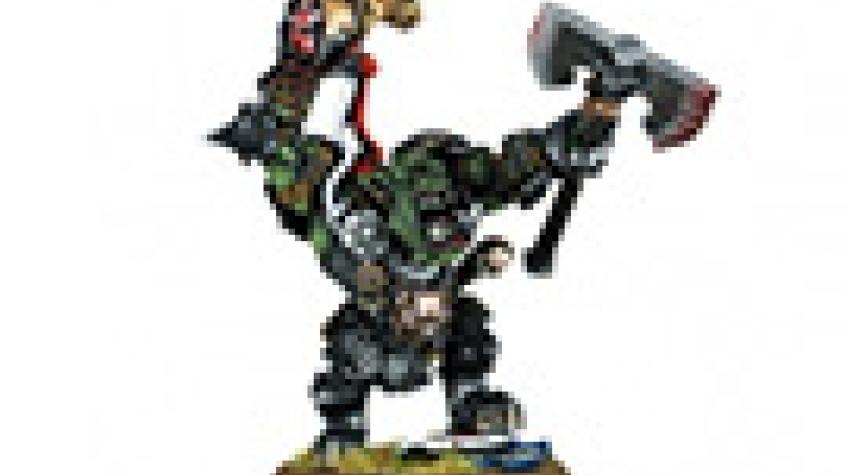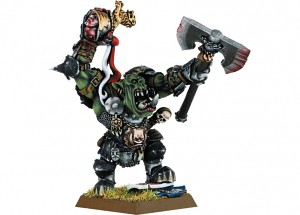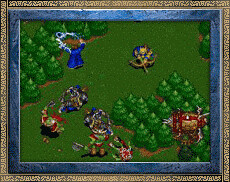
I’m a gamer. I play video games, I review video games, I even write up news items about video games. What you probably don’t know is that I enjoy more than video games, I enjoy games, period.
You don’t hear much about other types of games though. When it comes to the mainstream media, they only have enough time to mis-cover and misrepresent the most ostentatious and conspicuous form of gaming, video games. This means that while even if you’ve never played a video game before you know who Mario is or what Grand Theft Auto games are about. You’ve probably never heard of Warhammer, Ticket to Ride, or GURPS before, though these games and others like them have had a tremendous amount of influence on their younger sibling, the video game.
So, in an effort to educate as well as entertain I’m introducing, what I’m sure will become a sporadically updated series, Analog Gaming. In AG I’ll showcase various board, card, and table-top games (some you’ll know and others you won’t) highlighting how you play the game, its history, how long it takes, game mechanics, and then diving in to how it and variations on it have influenced more popular electronic games.
I don’t know if it’ll be successful but it sounds like fun and it’s what I know.
 First up, Warhammer By Games Workshop. Name sounds familiar doesn’t it? It should, it’s the primary influence for Blizzard’s popular, record shattering, series WarCraft. Warhammer is what is called in the industry a table-top fantasy war game. The basic idea is to build a customizable army using the books and rules that Games Workshop provides to write up a fantasy army, then you purchase, assemble, and paint small metal (or plastic) models, these models represent the forces of your Army. After you’ve designed and constructed your own army the next step is to wage war with it. Luckily, there are places to play all around the United States (and across the globe) though it is more fun to play against friends. Once you have an opponent you set up your playing area (a dining table works great, for starters). You set up your armies and begin moving them around the board, each unit has it’s own characteristics and moves (remember those books I mentioned, all this information is found in them). You can’t win a war without fighting and the heart and soul of Warhammer is the rule-set that controls how units within an army interact with other friendly and unfriendly units. These encounters are resolved by look at the two fighting units stats and then rolling across dice to see the outcome and comparing the dice to some charts to see who lives and who dies…
First up, Warhammer By Games Workshop. Name sounds familiar doesn’t it? It should, it’s the primary influence for Blizzard’s popular, record shattering, series WarCraft. Warhammer is what is called in the industry a table-top fantasy war game. The basic idea is to build a customizable army using the books and rules that Games Workshop provides to write up a fantasy army, then you purchase, assemble, and paint small metal (or plastic) models, these models represent the forces of your Army. After you’ve designed and constructed your own army the next step is to wage war with it. Luckily, there are places to play all around the United States (and across the globe) though it is more fun to play against friends. Once you have an opponent you set up your playing area (a dining table works great, for starters). You set up your armies and begin moving them around the board, each unit has it’s own characteristics and moves (remember those books I mentioned, all this information is found in them). You can’t win a war without fighting and the heart and soul of Warhammer is the rule-set that controls how units within an army interact with other friendly and unfriendly units. These encounters are resolved by look at the two fighting units stats and then rolling across dice to see the outcome and comparing the dice to some charts to see who lives and who dies…
I know this sounds boring, and it can be, at times. Referring to books, army list sheets, and quick-reference charts doesn’t sound fun. But this is only a small part of the game and the charts are easily memorized, Games Workshop has tried very hard to make the rules as non-intrusive as possible. Leaving most of your time to beating the hell out of your friend, which is a great deal of fun. The actual game is only 1/3 of the Warhammer experience, the other 2/3 is designing and customizing your army, and then putting it together and painting it. It’s incredibly rewarding to see models you’ve put together and painted spread across a table in the middle of a game your winning.
 “Blah, Blah, Blah” you’re saying, “What does all this have to do with Blizzard and Warcraft?” I’m getting there just one more thing before we get to the good parts! If you are a video gamer what I described should sound really familair to you, because I’m describing the analog non-digital version of a real-time strategy Game (RTS). RTSs were the direct offspring of turn-based strategy games, which were the offspring of table-top war games. The historic base war games are very complicated and very long, and their descendants on computers haven’t changed much… In 1983 Games Workshop released Warhammer moving the game into a fantasy setting and cutting out a bunch of complications, to make the game more fun, faster, and less of a headache. In the early and mid 90’s Games Workshop was approached by a small American development team called Blizzard, the folks at Blizzard were fans of GW’s products and they wanted to make a game based on the Warhammer setting. Negotiations went back and forth and Blizzard began eal development. Then GW backed out. Blizzard, though, still wanted to make the game, so they tweaked it and changed it a little and released it as Warcraft: Orcs and Humans. The rest is history, Warcraft was the first successful RTS game (alongside Command and Conquer). If you look through early Warcraft material and that in Warhammer books you’ll see several similarities: art direction, magic spells, griffin riders, wolf riders, tech gnomes and goblins, all are in Warhammer and the models of these figures look a lot like those found in the Warcraft games.
“Blah, Blah, Blah” you’re saying, “What does all this have to do with Blizzard and Warcraft?” I’m getting there just one more thing before we get to the good parts! If you are a video gamer what I described should sound really familair to you, because I’m describing the analog non-digital version of a real-time strategy Game (RTS). RTSs were the direct offspring of turn-based strategy games, which were the offspring of table-top war games. The historic base war games are very complicated and very long, and their descendants on computers haven’t changed much… In 1983 Games Workshop released Warhammer moving the game into a fantasy setting and cutting out a bunch of complications, to make the game more fun, faster, and less of a headache. In the early and mid 90’s Games Workshop was approached by a small American development team called Blizzard, the folks at Blizzard were fans of GW’s products and they wanted to make a game based on the Warhammer setting. Negotiations went back and forth and Blizzard began eal development. Then GW backed out. Blizzard, though, still wanted to make the game, so they tweaked it and changed it a little and released it as Warcraft: Orcs and Humans. The rest is history, Warcraft was the first successful RTS game (alongside Command and Conquer). If you look through early Warcraft material and that in Warhammer books you’ll see several similarities: art direction, magic spells, griffin riders, wolf riders, tech gnomes and goblins, all are in Warhammer and the models of these figures look a lot like those found in the Warcraft games.
As the Warcraft brand matured, especially with the WCIII and World of Warcraft, Blizzard has moved away from the Warhammer roots. They’ve injected a great deal of humor and cartoonish joy into the WC, which is absent from the bleak setting of Warhammer.
If you’re interested in playing Warhammer the best place to start is with the Battle for Skull Pass boxed set, which includes two small armies, and everything you and someone you know to start playing with them (they are unassembled and unpainted, part of the game is doing that too).

